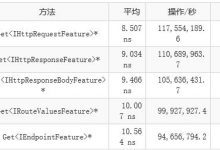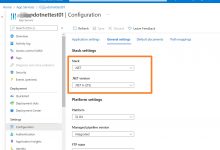.NET Core Logging
This package makes it a one-liner –
loggerFactory.AddFile()
– to configure top-quality file logging for ASP.NET Core apps.
- Text or JSON file output
- Files roll over on date; capped file size
- Request ids and event i1044ds included with each message
- Writes are performed on a background thread
- Files are periodically flushed to disk (required for Azure App Service log collection)
- Fast, stable, battle-proven logging code courtesy of Serilog
You can get started quickly with this package, and later migrate to the full Serilog API if you need more sophisticated log file configuration.
Getting started
1. Add the NuGet package as a dependency of your project either with the package manager or directly to the CSPROJ file:
<PackageReference Include=\"Serilog.Extensions.Logging.File\" Version=\"2.0.0\" />
2. In your
Program
class, configure logging on the web host builder, and call
AddFile()
on the provided
loggingBuilder
.
Host.CreateDefaultBuilder(args).ConfigureLogging((hostingContext, loggingBuilder) =>{// loggingBuilder.AddFile(\"Logs/Logs_{Date}.txt\");loggingBuilder.AddFile(hostingContext.Configuration.GetSection(\"Logging\"));}).ConfigureWebHostDefaults(webBuilder =>{webBuilder.UseStartup<Startup>();});
3. Add a custom excetion filter as a global exception handler:
public class GlobalExceptionFilter : IExceptionFilter{private readonly ILogger<GlobalExceptionFilter> _logger;public GlobalExceptionFilter(ILogger<GlobalExceptionFilter> logger){_logger = logger;}public void OnException(ExceptionContext context){var loggingBuilder = new StringBuilder();if (context.HttpContext.Request.GetDisplayUrl() != null)loggingBuilder.AppendLine($\"\\tUrl: {context.HttpContext.Request.GetDisplayUrl()}\");loggingBuilder.AppendLine($\"\\tIp: {context.HttpContext.Connection.RemoteIpAddress}\");#if DEBUGforeach (var key in context.HttpContext.Request.Headers.Keys){loggingBuilder.AppendLine($\"\\t{key}: {context.HttpContext.Request.Headers[key]}\");}#endifloggingBuilder.AppendLine($\"\\tError Message: {context.Exception.Message}\");if (context.Exception.InnerException != null){PrintInnerException(context.Exception.InnerException, loggingBuilder);}loggingBuilder.AppendLine($\"\\tError HelpLink: {context.Exception.HelpLink}\");loggingBuilder.AppendLine($\"\\tError StackTrace: {context.Exception.StackTrace}\");_logger.LogError(loggingBuilder.ToString());}public void PrintInnerException(Exception ex, StringBuilder loggingBuilder){loggingBuilder.AppendLine($\"\\tError InnerMessage: {ex.Message}\");if (ex.InnerException != null){PrintInnerException(ex.InnerException, loggingBuilder);}}}
4. In your
Startup
class, configure the global exception handler on the
ConfigureServices
method, so we can catch all unhandled exceptions:
public void ConfigureServices(IServiceCollection services){...services.AddControllersWithViews(options =>{options.Filters.Add<GlobalExceptionFilter>();});...}
public IActionResult Privacy(){throw new Exception(\"Unhandled exception\");return View();}
5. In your
Startup
class, add the log directory as static on the
Configure
method, so we can view the log directory:
public void Configure(IApplicationad8Builder app, IWebHostEnvironment env){...app.UseStaticFiles();//add the log directory as static, so we can view the log directoryapp.UseFileServer(new FileServerOptions(){FileProvider = new PhysicalFileProvider(Path.Combine(Directory.GetCurrentDirectory(), @\"Logs\")),RequestPath = new PathString(\"/Log\"),EnableDirectoryBrowsing = true});app.UseRouting();...}
Done! The framework will inject
ILogger
instances into controllers and other classes:
class HomeController : Controller{readonly ILogger<HomeController> _log;public HomeController(ILogger<HomeController> log){_log = log;}public IActionResult Index(){_logger.LogInformation(\"Hello, world!\");_logger.LogError(new Exception(\"Custom exception\"), \"Custom exception\");}}
The events will appear in the log file:
2016-10-18T11:14:11.0881912+10:00 0HKVMUG8EMJO9 [INF] Hello, world! (f83bcf75)
File format
By default, the file will be written in plain text. The fields in the log file are:
| Field | Description | Format | Example |
|---|---|---|---|
| Timestamp | The time the event occurred. | ISO-8601 with offset |
2016-10-18T11:14:11.0881912+10:00 |
| Request id | Uniquely identifies all messages raised during a single web request. | Alphanumeric |
0HKVMUG8EMJO9 |
| Level | The log level assigned to the event. | Three-character code in brackets |
[INF] |
| Message | The log message associated with the event. | Free text |
Hello, world! |
| Event id | Identifies messages generated from the same format string/message template. | 32-bit hexadecimal, in parentheses |
(f83bcf75) |
| Exception | Exception associated with the event. |
Exception.ToString() format (not shown) |
System.DivideByZeroException: Attempt to divide by zero\\r\\n\\ at... |
To record events in newline-separated JSON instead, specify
isJson: true
when configuring the logger:
loggingBuilder.AddFile(\"Logs/myapp-{Date}.txt\", isJson: true);
This will produce a log file with2080lines like:
{\"@t\":\"2016-06-07T03:44:57.8532799Z\",\"@m\":\"Hello, world!\",\"@i\":\"f83bcf75\",\"RequestId\":\"0HKVMUG8EMJO9\"}
The JSON document includes all properties associated with the event, not just those present in the message. This makes JSON formatted logs a better choice for offline analysis in many cases.
Rolling
The filename provided to
AddFile()
should include the
{Date}
placeholder, which will be replaced with the date of the events contained in the file. Filenames use the
yyyyMMdd
date format so that files can be ordered using a lexicographic sort:
log-20160631.txtlog-20160701.txtlog-20160702.txt
To prevent outages due to disk space exhaustion, each file is capped to 1 GB in size. If the file size is exceeded, events will be dropped until the next roll point.
Message templates and event ids
The provider supports the templated log messages used by Microsoft.Extensions.Logging. By writing events with format strings or message templates, the provider can infer which messages came from the same logging statement.
This means that although the text of two messages may be different, their event id fields will match, as shown by the two \”view\” logging statements below:
2016-10-18T11:14:26.2544709+10:00 0HKVMUG8EMJO9 [INF] Running view at \"/Views/Home/About.cshtml\". (9707eebe)2016-10-18T11:14:11.0881912+10:00 0HKVMUG8EMJO9 [INF] Hello, world! (f83bcf75)2016-10-18T11:14:26.2544709+10:00 0HKVMUG8EMJO9 [INF] Running view at \"/Views/Home/Index.cshtml\". (9707eebe)
Each log message describing view rendering is tagged with
(9707eebe)
, while the \”hello\” log message is given
(f83bcf75)
. This makes it easy to search the log for messages describing the same kind of event.
Additional configuration
The
AddFile()
method exposes some basic options for controlling the connection and log volume.
| Parameter | Description | Example value |
|---|---|---|
pathFormat |
Filename to write. The filename may include
{Date}
to specify how the date portion of the filename is calculated. May include environment variables. |
Logs/log-{Date}.txt
|
minimumLevel |
The level below which events will be suppressed (the default is
LogLevel.Information ). |
LogLevel.Debug |
levelOverrides |
A dictionary mapping logger name prefixes to minimum logging levels. | |
isJson |
If true, the log file will be written in JSON format. |
true |
fileSizeLimitBytes |
The maximum size, in bytes, to which any single log file will be allowed to grow. For unrestricted growth, pass
null . The default is 1 GiB. |
1024 * 1024 * 1024 |
retainedFileCountLimit |
The maximum number of log files that will be retained, including the current log file. For unlimited retention, pass
null . The default is 31 . |
31 |
outputTemplate |
The template used for formatting plain text log output. The default is
{Timestamp:o} {RequestId,13} [{Level:u3}] {Message} ({EventId:x8}){NewLine}{Exception}
|
{Timestamp:o} {RequestId,13} [{Level:u3}] {Message} {Properties:j} ({EventId:x8}){NewLine}{Exception}
|
appsettings.json
configuration
The file path and other settings can be read from JSON configuration if desired.
In
appsettings.json
add a
\"Logging\"
property:
{\"Logging\": {\"PathFormat\": \"Logs/log-{Date}.txt\",\"LogLevel\": {\"Default\": \"Debug\",\"Microsoft\": \"Information\"}}}
And then pass the configuration section to the
AddFile()
method:
loggingBuilder.AddFile(Configuration.GetSection(\"Logging\"));
In addition to the properties shown above, the
\"Logging\"
configuration supports:
| Property | Description | Example |
|---|---|---|
Json |
If
true , the log file will be written in JSON format. |
true |
FileSizeLimitBytes |
The maximum size, in bytes, to which any single log file will be allowed to grow. For unrestricted growth, pass
null . The default is 1 GiB. |
1024 * 1024 * 1024 |
RetainedFileCountLimit |
The maximum number of log files that will be retained, including the current log file. For unlimited retention, pass
null . The default is 31 . |
31 |
OutputTemplate |
The template used for formatting plain text log output. The default is
{Timestamp:o} {RequestId,13} [{Level:u3}] {Message} ({EventId:x8}){NewLine}{Exception}
|
{Timestamp:o} {RequestId,13} [{Level:u3}] {Message} {Properties:j} ({EventId:x8}){NewLine}{Exception}
|
Using the full Serilog API
This package is opinionated, providing the most common/recommended options supported by Serilog. For more sophisticated configuration, using Serilog directly is recommened. See the instructions in Serilog.AspNetCore to get started.
The following packages are used to provide
AddFile()
:
- Serilog – the core logging pipeline
- Serilog.Sinks.RollingFile – rolling file output
- Serilog.Formatting.Compact – JSON event formatting
- Serilog.Extensions.Logging – ASP.NET Core integration
- Serilog.Sinks.Async – async wrapper to perform log writes on a background thread
 爱站程序员基地
爱站程序员基地


